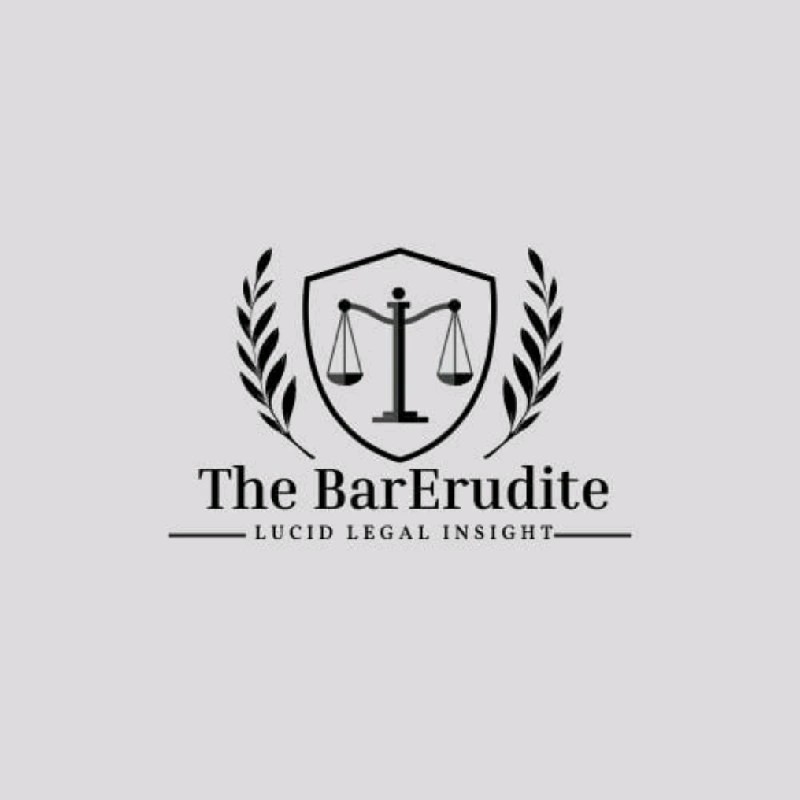Author Details:
ANJALI BARMOLA
3rd Year, BA LLB
South Calcutta Law College, Kolkata
In Re: Directions in the matter of demolition of structures
CIVIL/CRIMINAL ORIGINAL JURISDICTION
WRIT PETITION (CIVIL) NO.295, 328 OF 2022
WITH WRIT PETITION (CRIMINAL) NO. 162 OF 2022
DECIDED ON: 13 NOVEMBER 2024
INTRODUCTION
A Shelter or home is not just a structure made of brick or mortar but of the hopes and dreams of each individual living under that roof. Among many inalienable rights of the Indian citizen, one is the Right to life an extension to which is the Right to Shelter. This is a case when the state authorities failed to follow the basic principle of natural justice and acted without adhering to the rule of law resulting in the demolition of the houses of the accused or convicts of a crime, acting as an adjudicator disbursing punishment where “might was right” and Judiciary stepped in to uphold the rule of law.
BACKGROUND OF THE CASE
A batch of Writ Petitions was filed under Article 32 of the Constitution of India seeking to raise grievances on behalf of various citizens whose residential and commercial properties have been demolished by the state machinery without following due process of law because they were accused of criminal offenses. The petitions raised the demand to issue directions to the Union and state government against such demolitions and prayed for strict action to be taken against officials who participated in the exercise.
The court, on 2nd September 2024, vide an order proposed to lay down certain guidelines on ‘Pan-India Basis’ to address the issues raised by the petitions. It also requested all the parties to give their suggestions so that the court can frame appropriate guidelines.
The court vide an order dated 17th September 2024 prohibited any demolition, anywhere in the country without seeking leave of this court, excluding any unauthorized structure in any public place and cases where there is an order for demolition made by a Court of law.
ISSUES RAISED
- Whether the properties of the persons, who are accused of committing certain crimes or convicted for the commission of criminal offenses, can be demolished by the officers of the state government, without following the due process of law or not?
- Can any person living with the said accused be penalized by demolishing the property without them even being involved in any crime only on the basis of them being related to an alleged accused person?
- What is the extent of the state’s power of demolition of the houses that are required to be demolished for breach of the local laws?
ARGUMENTS BY THE PETITIONER
The counsels on behalf of the petitioners stated that the chain of events depicts that the demolition of the houses was an immediate reflection of the persons being implicated in crimes. It was submitted that the time gap between the person being named as an accused and the demolition of his property/properties made it apparent that the punishment of demolition was inflicted by the executive on such person being arrayed as an accused. It was also submitted that in case of demolition of the property of an alleged accused, it is difficult to believe that only a single construction belonging to an accused is unauthorized construction, whereas all other structures in the vicinity are legal and authorized as per local laws.
In pursuance of the order dated 2nd September 2024, various learned counsel on behalf of petitioners gave descriptive suggestions regarding each procedural step to be followed for the demolition of a property.
ARGUMENTS BY THE RESPONDENT
The council on behalf of the respondent stated that most of the houses which were demolished were demolished since the constructions were found to be in breach of the local municipal laws. It was submitted that the houses were demolished since they were found to violate either the provisions of municipal law governing them or the Panchayat laws governing such construction. It was also submitted that in some cases it may be by sheer coincidence that the properties which were in breach of local municipal laws governing them also happen to belong to accused persons.
Similarly, in pursuance of the court order, the suggestions on behalf of the respondent were submitted mentioning strict adherence to the existing municipal laws regarding the demolition. Any guidelines should carve out an exception in case of “unauthorized structures in any public place.
OBSERVATIONS BY THE COURT
The honorable court emphasized varied legal principles and the constitutional ethos to address each facet of the issue at hand.
- Rule of Law: It translates to the principle, ‘No one is above the law of the land; everybody is equal before the law.’The rule of law is part of the basic structure of the Constitution.[i] The Breach of the Rule of law amounts to the negation of equality under Article 14 of the Constitution.[ii] The rule of law has been described as a safeguard against the arbitrary use of State power. It ensures that the actions of the Government and its authorities are governed by established legal principles, rather than arbitrary discretion.
- Separation of Powers: The doctrine of separation of powers, as envisaged in our Constitution has earmarked separate areas for the exercise of powers viz., the Executive, the Legislature, and the Judiciary. The Constitution Bench of the Court has held that our Constitution does not contemplate the assumption, by one organ or part of the State, of functions that essentially belong to another.[iii] The Separation of powers forms part of the basic structure of the Constitution. The Court records the danger of legislative, executive, and judicial powers being vested in one organ and, therefore, held that the duty to decide whether the limits have been transgressed has been placed on the judiciary.
- Doctrine of Public Trust and Public Accountability: The executive exercises its powers as a ‘trustee’ of the citizens. Therefore, the executive actions must be consistent with maintaining public trust. Conversely, when the executive acts in breach of the principles of ‘rule of law’ and ‘separation of powers’, the doctrine of public trust and accountability comes into play. It is held that every officer in the hierarchy of the State, by virtue of him being a “public officer” or “public servant”, is accountable for his decisions to the public as well as to the State. The concept of dual responsibility arises in the larger public interest and for proper governance.
- Rights of the Accused under the Constitution: “The jurisprudence which emerges on the rights of prisoners under Article 21 is that even the incarcerated have inherent dignity. They are to be treated humanely and without cruelty.”[iv]Hence, incarcerated individuals, whether accused, undertrial, or convicts, have certain constitutional rights, as any other citizen. They have a right to dignity and cannot be subjected to any cruel or inhuman treatment. The punishment awarded to such persons has to be in accordance with the law.
- Principles of Criminal law (Presumption of Innocence and Natural Justice): The principle, that “an accused is not guilty unless proven so in a court of law” is foundational to our legal system This principle ensures that individuals are not unfairly punished based solely on accusations or suspicions. The Indian criminal justice system works in accordance with the Rule of law and the Right to a fair trial is essential to upholding the Rule of law and ensuring Natural Justice. The right to a fair and speedy trial is enshrined under the right to life guaranteed under the Constitution.[v]
- Right to Shelter: The Court held that the right to shelter is a fundamental right under Article 19(1) of the Constitution.[vi] The right to shelter is one of the facets of Article 21. A house is not just a property but embodies the collective hopes of a family or individuals for stability, security, and a future. If this is to be taken away, then the authority must be satisfied that this is the only option available.
- Permissibility of Collective Punishment: ‘We have rejected, as a nation, the theory of community guilt and collective punishment and instead that no man shall be punished except for his own guilt.’[vii] If demolition of a house is permitted wherein a number of persons of a family or a few families reside only on the ground that one person residing in such a house is either an accused or convicted of the crime, it will amount to inflicting collective punishment.
THE JUDGEMENT
Addressing the first and foremost issue, the court upheld, that if a citizen’s house is demolished merely because he is an accused or a convict, that too without following the due process as prescribed by law, will be unconstitutional for more than one reason. Firstly, the executive cannot declare a person guilty, as this process is the fundamental aspect of the judicial review. Only based on the accusations, if the executive in an arbitrary manner demolishes the houses of citizens, violating their ‘Right to Shelter’ only on the ground that they are accused of a crime, then it acts contrary to the principles of ‘rule of law’ and is not permissible. Such an action by the executive would be wholly arbitrary and would amount to an abuse of the process of law. If the executive acts as a judge and inflicts a penalty of demolition on a citizen on the ground that he is an accused, it violates the principle of ‘separation of powers’ and infringes upon the ‘Rights of the accused’.
Secondly, punishing such persons who have no connection with the crime by demolishing the house where they live or properties owned by them is nothing but anarchy and would amount to a violation of the right to life guaranteed under the Constitution. Depriving innocent people of their right to life by removing shelter from their heads, would be wholly unconstitutional. Inflicting a collective punishment on the entire family or the families residing in such a structure would be against our constitutional scheme and the criminal jurisprudence would never permit the same.
While considering the issue with regard to the demolition of the houses which are required to be demolished for breach of the local laws, the court found that the principle of the rule of law needs to be considered even in the municipal laws. There may be certain unauthorized constructions that could be compoundable or certain constructions wherein only part of the construction is required to be removed, in such cases, the extreme step of demolition of the property/house property would be against the “doctrine of proportionality” and it to be opted as a last resort.
Hence, the court in the exercise of its power under Article 142 of the Constitution, issued certain directions with regard to Show-cause notice, personal hearing, final order, scrutiny of such order, and proceedings of demolition, so that it could prevent any arbitrary misuse of state power and any violation of the guidelines will attract contempt of court.
CRITICAL ANALYSIS
Primarily,the suggestions received by the court were very descriptive while emphasizing every aspect of demolition from the appellate system to the liability of an erring officer and the compensatory provisions. However, the guidelines issued by the court missed out on many important aspects that would have significantly affected the lacunae present in the existing laws, like an affidavit of compliance by the officer in charge before the demolition would have raised accountability and a Survey of the neighbourhood to establish if there is any other unauthorised structure so that one who is accused of a crime is not singled out in the process. It does not provide for service of notice to the person who is in custody via the concerned Judicial Magistrate. It also missed out on defining the contours of the liability of the erring officer, or the compensatory provision if any demolition is found to be against the established law. Such provisions would have directly implicated any illegal demolition to be an arbitrary use of state power for which the state and its instrumentalities can be held liable.
Secondly, the court while exercising the power vested in it by Article 142 of the constitution, ‘to pass such decree or make such order as is necessary for doing complete justice’[viii] issued certain guidelines, having a prospective effect, protecting the rights of the citizen and the rights of the accused, while limiting the scope of this petition it fails to provide for the compensation to the victims of such illegal demolitions, when right to compensation is some palliative for the unlawful acts of instrumentalities which act in the name of public interest and which present for their protection the powers of the State as a shield.[ix] The victims who wanted compensation to rebuild their houses and punishment for those responsible for the demolition, expressed dissatisfaction.[x] The irony is that this came when the court itself observed that when the right of an accused or a convict is violated on account of illegal or arbitrary exercise of power by the State or its officials, there has to be institutional accountability and one such measure is to grant compensation and the officers of the state acting in total arbitrary or mala fide manner cannot be spared.
Lastly, it is noteworthy that there is no vacuum of laws and existing statutory acts like the Uttar Pradesh Urban Planning and Development Act, 1973, provides for the demolition of structures that strictly come under the ambit of respective state governments. Any guidelines on the state subject encroach upon the executive and legislative function, which goes against the ‘Separation of power’. The directions issued by the court do not apply to any unauthorized structure in any public place such as a road, street, footpath, abutting railway line, or any river body or water bodies, and a similar exception was drawn in its order dated 17th September 2024. It is in consonance with existing municipal laws that do not provide for notice for the demolition of structures in public places. Hence, the court while upholding the right to shelter of private individuals was bound to recognize the shared right over public places and the state action to uphold this same.
CONCLUSION
The case of punitive extra-judicial demolition has put forth the interconnectedness of fundamentals of the constitution i.e. rule of law, separation of power, judicial review, etc. and to uphold the legal principle of natural justice in the modern world democracy of arbitrary state action has led to widening scope of judicial surveillance. Hence, the Judiciary as the protector of the constitution, to curb the rampant violation of the rights of the individual by the state, stepped up to uphold the rule of law. In a balancing act by the Judiciary, issuing mandate guidelines to set a uniform standard securing the rights of the citizen while not having an overbearing effect on the statutory acts. This historic judgment once again held that there is no place for tyranny (the absence of the rule of law) and reflected on the trust of the people in judicial review of the whimsical acts of the state. It has set a precedent that will act as a guiding template against any arbitrary abuse of power.
[i] Smt. Indira Nehru Gandhi v. Shri Raj Narain, (1976) 2 SCR 347
[ii] Bilkis Yakub Rasool v. Union of India & Others, [2024] 1 S.C.R. 743
[iii] Rai Sahib Ram Jawaya Kapur and others v. State of Punjab, AIR 1955 SC 549
[iv] Sukanya Shantha v. Union of India & Ors., 2024 INSC 753
[v] State of Maharashtra v. Champalal Punjaji Shah, (1982) 1 SCR 299
[vi] In State of Karnataka v. Narasimhamurthy, (1995) 5 SCC 524
[vii] Gujarat Steel Tubes Ltd. and others v. Gujarat Steel Tubes Mazdoor Sabha and others, (1980) 2 SCC 593
[viii] India Const. art. 142
[ix] Rudul Sah v. State of Bihar & Anr., 1983 INSC 85
[x] Ziya Us Salam, Supreme Court Verdict on Bulldozer Demolitions: Jamiat Hails Verdict, Victims Seek Compensation, THE HINDU (Nov. 13, 2024), https://www.thehindu.com/news/national/bulldozer-victims-seek-compensation-even-as-jamiat-hails-supreme-court-verdict/article68864477.ece Accessed on 18th November 2024.




Leave a Reply